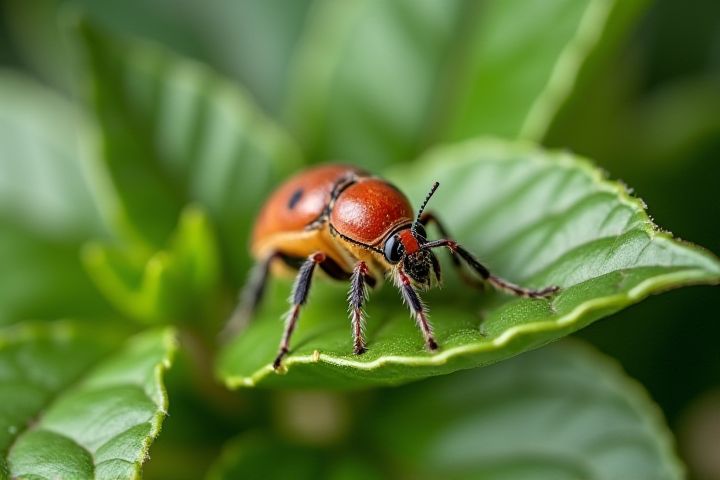
Certain house plants can naturally deter pests, enhancing your indoor environment. For instance, lavender emits a strong scent that repels mosquitoes and flies, providing both aroma and protection. Similarly, mint is not only a refreshing herb for culinary use but also effectively wards off ants and spiders. Marigolds, known for their vibrant colors, release compounds that deter aphids and nematodes, making them ideal for planting near other house plants. Incorporating these pest-repelling plants into your home not only beautifies your space but also contributes to a healthier living area by minimizing insect disturbances.
What House Plants Deter Pests
Lavender
Lavender (Lavandula) is a fragrant house plant known for its pest-repelling properties, particularly against mosquitoes and fleas. If you want to create a more insect-free environment, consider placing 2 to 3 lavender plants in your home, as their aromatic oils can be a natural deterrent. This drought-resistant plant thrives in well-drained soil and requires at least 6 hours of direct sunlight daily. Incorporating lavender into your indoor space not only enhances your decor but also promotes a healthier atmosphere by minimizing unwanted pests.
Basil
Basil (Ocimum basilicum) is a fragrant herb known not only for its culinary uses but also for its pest-repelling properties. This aromatic plant emits essential oils that can deter common garden pests like aphids, spider mites, and whiteflies. Growing basil alongside your vegetables can create a natural barrier, reducing the need for chemical pesticides. Incorporating basil into your indoor garden not only enhances your cooking but also contributes to a healthier and more pest-resistant environment.
Rosemary
Rosemary (Rosmarinus officinalis) is an aromatic herb known for its pest-repelling properties, making it an excellent choice for your indoor garden. Studies indicate that the essential oils of rosemary can effectively deter common pests such as aphids, spider mites, and whiteflies. Grown in well-draining soil and placed in bright, indirect light, rosemary thrives with minimal care and can grow up to 3 feet tall indoors. By incorporating rosemary into your home, you not only enhance your environment with its invigorating scent but also create a natural barrier against unwanted insects.
Mint
Mint plants, belonging to the mentha family, are known for their strong aromatic properties that naturally repel pests such as aphids, ants, and spider mites. Growing mint in your home or garden can create a protective barrier against these unwanted visitors while also providing fresh leaves for culinary uses. This hardy plant thrives in well-drained soil and partial sunlight, making it an excellent choice for indoor gardening. With proper care, your mint can flourish and contribute to a pest-free environment.
Lemongrass
Lemongrass, scientifically known as Cymbopogon citratus, is a highly effective houseplant for deterring pests due to its strong citrus scent. This aromatic herb can repel mosquitoes, flies, and other unwanted insects, making it a natural pest control solution for indoor spaces. With the ability to thrive in well-drained soil and moderate sunlight, you can easily cultivate lemongrass in your home garden. In addition to its pest-repelling properties, lemongrass can be harvested for culinary uses, providing both aesthetic appeal and practical benefits to your household.
Marigold
Marigolds are renowned for their pest-repelling properties, making them a valuable addition to any garden or indoor plant collection. Their vibrant flowers release a natural compound called pyrethrum, which is effective in warding off harmful insects like nematodes, aphids, and whiteflies. By planting marigolds alongside vegetables or herbs, you create a protective barrier that enhances the overall health of your plants. When you cultivate marigolds in your home or garden, not only do you enjoy their beauty, but you also contribute to a more eco-friendly pest management strategy.
Chrysanthemum
Chrysanthemums, commonly known as mums, are not only vibrant additions to your home decor but also powerful pest deterrents. Their natural oils contain pyrethrum, a compound that repels various insects including aphids, beetles, and spider mites. By placing Chrysanthemums strategically around your living space, you can create a barrier against these unwanted pests while enjoying their colorful blooms. To enhance their effectiveness, ensure your Chrysanthemums receive adequate sunlight and water, maintaining health for optimal pest-repelling properties.
Catnip
Catnip, scientifically known as Nepeta cataria, is highly effective in deterring a variety of household pests such as mosquitoes, flies, and ants due to its potent essential oils. This perennial herb, part of the mint family, emits a strong aroma that repels insects, making it an excellent natural pest deterrent for your home. Beyond its pest-repelling properties, catnip is also safe for cats and can stimulate playful behavior, adding joy to your indoor space. Growing catnip in pots not only enhances your decor but also provides a practical solution for maintaining a pest-free environment.
Pennyroyal
Pennyroyal, a fragrant member of the mint family, acts as a natural pest deterrent, particularly effective against mosquitoes and fleas. Its strong aroma disrupts insect navigation, making your indoor environment less appealing to unwanted pests. You can easily grow Pennyroyal in pots or containers, allowing for mobility and easy care while enjoying its aromatic leaves. Incorporating this plant into your home not only enhances your decor but also provides a natural means of pest control.
Pitcher Plant
The Pitcher Plant, scientifically known as Sarracenia, is an effective natural pest deterrent, primarily due to its unique trapping mechanism. Its tubular structure contains digestive enzymes that lure, capture, and digest insects, making it an excellent choice for managing aphids, mosquitoes, and flies around your home. Placing a Pitcher Plant in bright, indirect sunlight enhances its insect-catching capabilities while maintaining humidity levels in the surrounding area. Incorporating this carnivorous plant not only decorates your space but also promotes a healthier indoor environment by reducing pest populations naturally.
